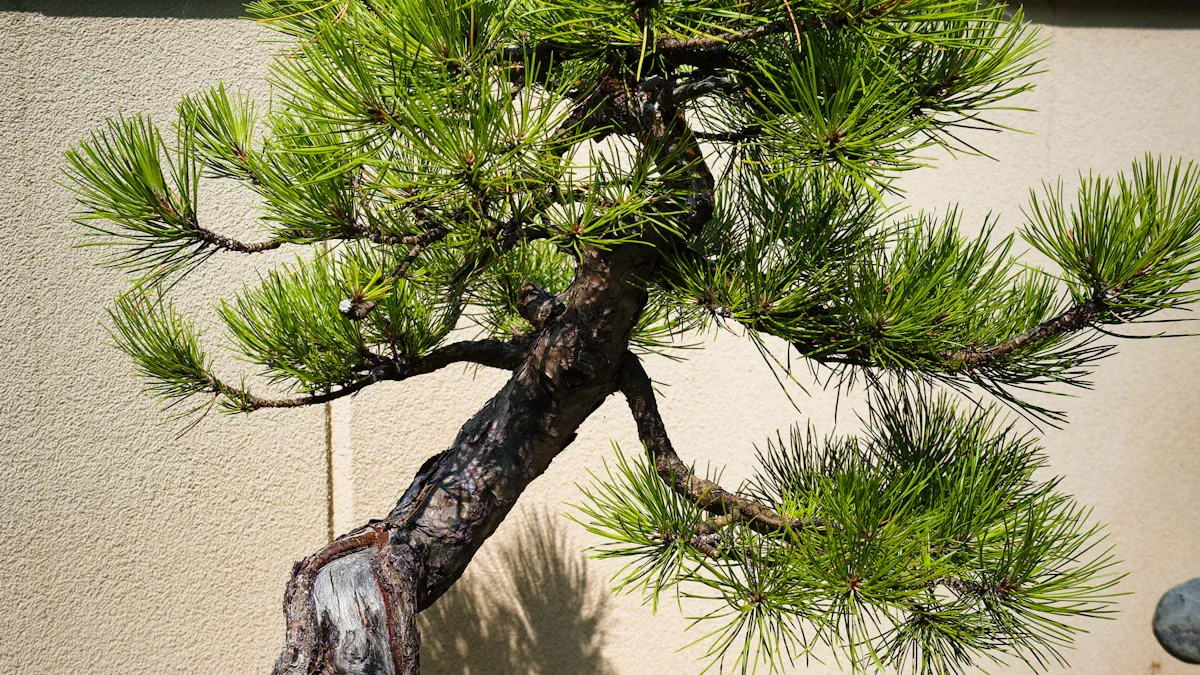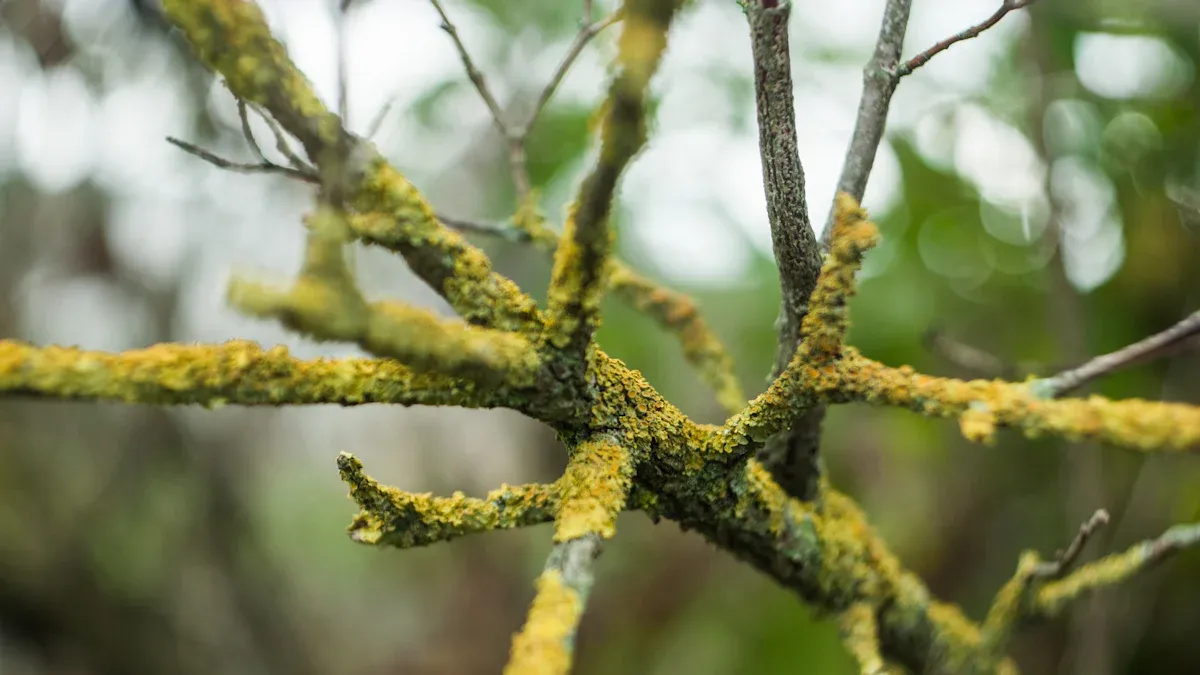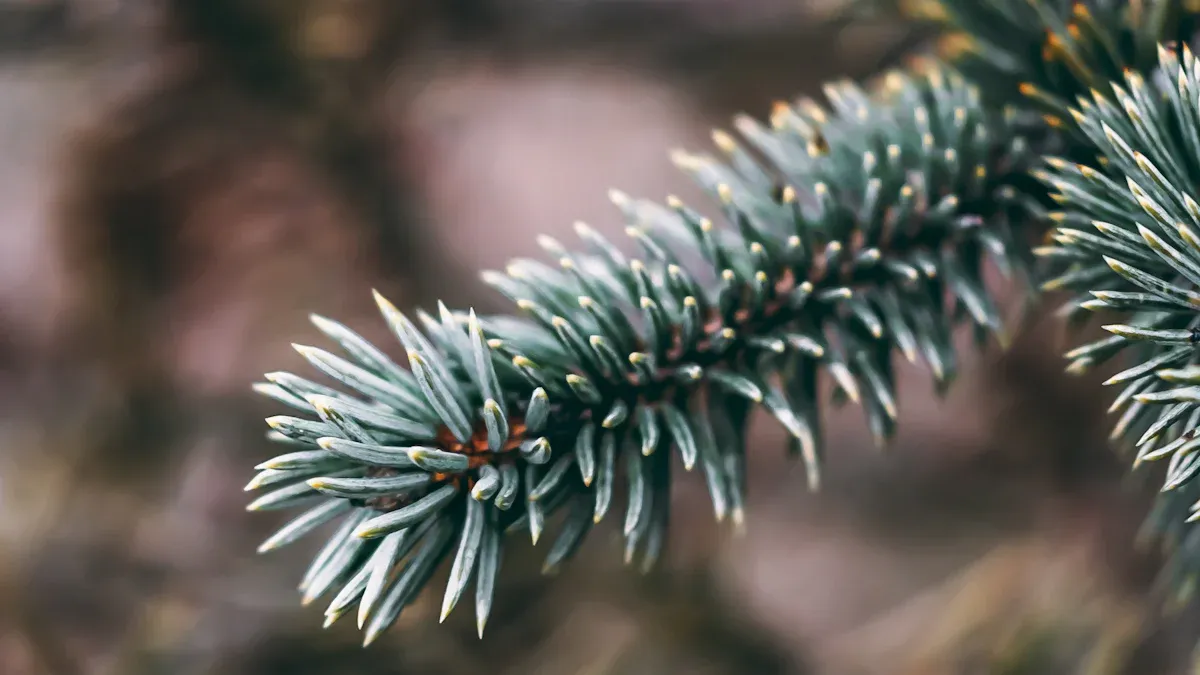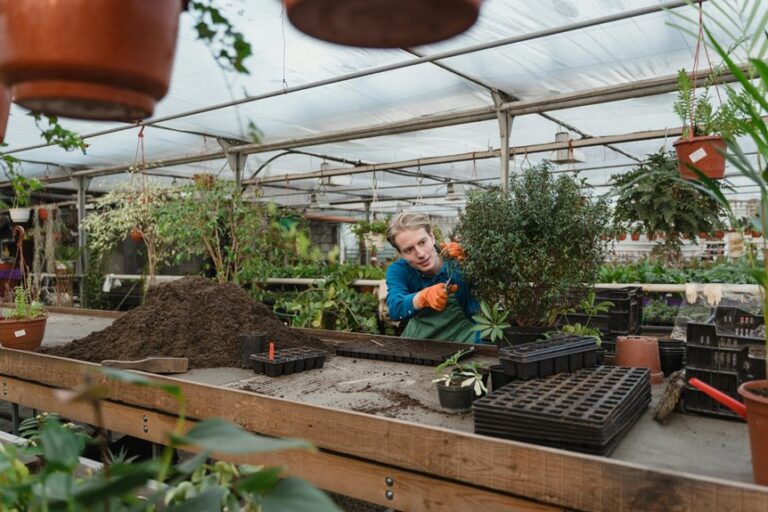
Recognizing diseases in your japanese black pine trees is crucial for maintaining their health and growth. Early detection can prevent severe damage and ensure your trees thrive. Look for common symptoms, such as:
Symptom | Description |
|---|---|
Brown needles | Needles turn brown as the disease progresses. |
Brittleness | The tree becomes brittle, indicating severe health decline. |
Decline in health | Overall health declines due to obstruction of water flow and resin production. |
Timely treatment can make a significant difference in recovery. Stay vigilant to protect your trees.
Key Takeaways
Regularly monitor your Japanese black pine trees for early signs of disease, such as yellowing needles and wilting branches.
Prune infected tissue promptly to prevent the spread of diseases like needle cast and Diplodia tip blight.
Improve air circulation around your trees by thinning crowded branches to reduce humidity and disease risk.
Apply fungicides as needed, following the manufacturer’s instructions for effective treatment of fungal infections.
Consider organic solutions, such as composting and natural pesticides, to promote tree health and manage diseases sustainably.
Diseases of Japanese Black Pine
Needle Cast
Needle cast is a common disease that affects Japanese black pine trees. This disease is caused by various fungal pathogens, including Lophodermium and Ploioderma. You can identify needle cast by observing the following symptoms:
Symptom/Stage | Description |
|---|---|
Initial Symptoms | Yellow spots appear on new growth, which later turn brown or purplish. |
Progression | Needles drop, especially from lower branches, leading to sparse foliage. |
Long-term Effects | Repeated infections weaken the tree, making it susceptible to other stressors. |
As the disease progresses, you may notice off-white fruiting bodies on the needles during wet weather. These spores can spread the infection further. To manage needle cast effectively, consider these treatment options:
Non-chemical Management:
Reduce humidity by removing weeds and thinning the canopy.
Space plantings to improve air circulation.
Prune lower branches and infected twigs.
Chemical Management:
Apply fungicides labeled for use on pine trees. You should make a minimum of three applications between late July and late September.
Consult a commercial pesticide applicator for trees over 10 feet tall.
Diplodia Tip Blight
Diplodia tip blight is another significant disease affecting Japanese black pine trees. It is caused by the fungus Diplodia sapinea. You can recognize this disease through several key symptoms:
Oozing of small drops of resin from shoot buds in early spring.
Infected buds stop growing and do not reach their normal size.
Whole branches may die while needles remain attached.
Infected trees often show stunted new shoots with short, brown needles. The lower branches are usually the first to be affected. To manage Diplodia tip blight, follow these recommendations:
Apply fungicides just before bud break, with two additional applications at specified intervals.
Protect trees from injury by creating a mulch area and avoiding heavy equipment near the tree.
Prune infected branches during dry periods and sterilize your tools before use.
Both needle cast and Diplodia tip blight can severely impact the health of your Japanese black pine trees. Regular monitoring and timely treatment are essential to keep your trees healthy and thriving.
Identifying Symptoms of Diseases

Visual Signs
You can spot early signs of disease in your Japanese black pine trees by observing their appearance. Here are some key visual indicators to watch for:
Wilting branches: This can indicate a pinewood nematode infection.
Yellowing needles: This symptom often accompanies the same nematode issue.
Defoliation: Look for missing needles, which may suggest sawfly infestations.
Distorted growth: Moth larvae can cause unusual growth patterns.
Browning needles: This is a common sign of Diplodia tip blight.
Thin foliage: Honey fungus may lead to sparse needle coverage.
Growth of white fungus: This can indicate honey fungus presence.
Dropping needles: Needle cast disease often results in needle loss.
Tip: Pay attention to needle discoloration. A yellow band may signal a fungal infection, while small white puffs on the needles could also indicate a problem.
Behavioral Changes
Behavioral changes in your trees can also signal disease onset. Here are some signs to monitor:
Changes in water status: If your tree shows signs of stress, it may struggle to absorb water.
Electrolyte leakage: This indicates cellular damage due to disease.
Development of traumatic resin canals: This occurs as a defensive response to nematode infections.
Additionally, shedding last year’s needles can indicate stress from overwatering or root rot. Nutrient deficiencies may also contribute to needle drop.
By recognizing these visual signs and behavioral changes, you can take proactive steps to protect your Japanese black pine trees from potential diseases. Regular monitoring will help you maintain a healthy garden.
Treatment Strategies for Japanese Black Pine Diseases

Chemical Treatments
When dealing with diseases in your Japanese black pine trees, chemical treatments can be effective. You should consider using fungicides and nematicides to control various pathogens. Here are some recommended fungicides:
Treatment Name | Application Rate | Group Type | Reentry Time |
|---|---|---|---|
Abound | 6 to 15.5 fl oz/A | Group 11 | 4-hr |
Bravo Weather Stik | 2 to 3.5 pints/A | Group M5 | 12-hr |
Concert | 22 to 35 fl oz/100 gal water | Group 3 + M5 | 12-hr |
Eagle 20 EW | 6 to 12 fl oz/100 gal water | Group 3 | 24-hr |
Echo 720 | 2 to 3.5 pints/A | Group M5 | 12-hr |
Propiconazole-based | Various rates | Group 3 | N/A |
Quadris | 6 to 15.5 fl oz/A | Group 11 | 4-hr |
Thiophanate-methyl | Various rates | Group 1 | 12-hr |
To maximize the effectiveness of these treatments, follow these steps:
Remove infected tissue by pruning off any diseased shoots or needles.
Promote good air circulation by thinning out crowded branches.
Apply fungicides according to the manufacturer’s instructions for application rates and timing.
Water your trees properly, avoiding overhead watering to reduce humidity.
Monitor your trees regularly for signs of disease and act quickly.
Additionally, nematicides can help manage Bursaphelenchus xylophilus, the nematode causing pine wilt. These products are preventive and must be injected by a licensed professional before infestation.
Organic Solutions
If you prefer organic solutions, several methods can help manage diseases in your Japanese black pine trees. Here are some effective strategies:
Improve soil health through composting and soil amendments.
Prune trees during winter to minimize stress and promote healing.
Use natural pesticides and biological control methods, such as releasing ladybugs to manage aphid populations.
Research shows that treatment with Bacillus subtilis JCK-1398 significantly reduces disease symptoms in Japanese black pine trees. Seedlings treated with JCK-1398 showed lower disease severity compared to untreated controls. This highlights the potential of organic solutions in managing tree health.
Preventative measures also play a crucial role in disease management. For instance, implementing silvicultural control methods, such as clear-cutting and removing logs, can significantly reduce the incidence of diseases like pine wilt.
By combining chemical treatments with organic solutions, you can create a comprehensive strategy to protect your Japanese black pine trees from diseases. Regular monitoring and timely interventions will ensure your trees remain healthy and vibrant.
In summary, caring for your Japanese black pine trees requires vigilance and proactive measures. Here are key practices to help you maintain their health:
Remove infected tissue: Prune off diseased shoots or needles and dispose of them properly.
Promote good air circulation: Thin out crowded branches to improve airflow.
Apply fungicides: Use fungicides like copper or mancozeb as needed.
Water trees properly: Avoid overhead watering to reduce humidity.
Monitor regularly: Inspect trees for signs of disease and act quickly.
Regular monitoring is essential. It helps you identify issues early, such as incorrect watering or pest infestations. By addressing these problems promptly, you can significantly enhance the longevity and beauty of your trees. With diligent care, your Japanese black pines can thrive in your garden. 🌲
FAQ
What are the common signs of disease in Japanese black pine trees?
Look for yellowing needles, wilting branches, and defoliation. These symptoms often indicate issues like needle cast or Diplodia tip blight. Regular monitoring helps in catching them early.
How can I treat needle cast effectively?
To treat needle cast, prune infected branches, improve air circulation, and apply fungicides labeled for pine trees. Follow the manufacturer’s instructions for best results.
What should I do if I notice resin oozing from my pine tree?
Oozing resin may indicate Diplodia tip blight. Prune affected areas and apply fungicides before bud break. Ensure you sterilize your tools to prevent further spread.
Can I use organic solutions for treating diseases?
Yes, you can use organic solutions like composting, natural pesticides, and biological controls. These methods can help manage diseases while promoting overall tree health.
How often should I monitor my Japanese black pine trees?
You should check your trees regularly, at least once a month. This helps you identify any early signs of disease or stress, allowing for timely intervention.


